Blackberry is a berry, which has not only excellent taste, but also by various therapeutic properties. North America is considered to be the birthplace of this culture, but it is not less actively grown on our continent. The plant is a perennial semi-staple from the sort of ruble, which belongs to the family of rustic. Blackberry usually blooms in mid-June, and the color holds almost all summer. As for the name, then traditionally blackberry is called one of her species, which is the siza blackberry variety. In Ukraine, this berry is sometimes called "noiently", and in the Caucasus it is called "Agenina". The breeders were withdrawn new high-yielding varieties of this culture, among which one of the first places is occupied by the removable blackberry. Next, we consider the characteristics of this plant, as well as how the landing is carried out by the repairing blackberry.
Repairing blackberry: cultural description
Externally, this plant is a bush with shoots, spikes and stems. Blackberry berries are similar to the form of raspberry berries, but they have a different color from them and differ in taste. Blackberry gives more harvest than raspberry. In addition, unlike raspberry, blackberry less frost resistant, so it is quite problematic to breed it in our country. Because of this, it grows it mainly in the Krasnodar Territory.
Today, more than 200 types of blackberry are known to the world. During the ripening, the berry acquires three different colors. So, at the stage of ripening blackberry has a green color and gradually acquires a red shade, and when the fruits are completely matured, they are already black. Dachnikov Reviews about remote blackberry most often positive, because this culture variety is characterized by high yield. Buy seedlings of the repairing blackberry can be almost in any store for dachnings. Although the remote blackberry is known relatively recently, the varieties of this species rightfully became popular among the gardeners. They have a large number of advantages due to which the cultivation of this berry has become much easier.
Characteristics of removable blackberries are as follows:
- The main feature of the repairing blackberry, which attracts gardeners is to solve the problem of frost-resistant in this culture. As you know, other types of blackberries are not distinguished by the resistance to negative temperatures and often they simply die with severe frost without an additional shelter. When growing removable blackberries, this issue is solved simply by the removal of all shoots and the shelter of the root system. You do not need to spend time on growing relegation shoots so that they ferture the next year. Thanks to a one-way method of growing shoots, this blackberry varieties are not afraid of spring frosts, because they are calmly tolerated.
- There is also no need to chemical processing of shoots in the fall and spring, which allows you to grow an eco berry.
- Grow the repairing blackberry both in the greenhouses and in the conditions of open soil. At the same time, the size of the berries and the amount of harvest in both cases is at a high level.
- In greenhouses, blackberry is grown in small tanks. To ensure a sufficient place for each plant, the pots are placed in such a way that the row to one running meter accounted for no more than two tanks. Blackberry to obtain a high harvest requires quality pollination. To do this, in the greenhouse it is necessary to ensure a sufficient number of insects.
- In order for the growing blackberry in the open soil was more effective, it is necessary to pay due attention to its landing. The right choice of space, soil and adherence to the optimal landing scheme - will bring excellent results.
- Fruit removable blackberry 1 or 2 times a season. In the southern regions with soft winter, you can leave last year's shoots that will be froning before new ones. Thus, you can achieve two fruits. If you cut in the fall, the shoots are completely, then the crop will be only one.
- In addition to delicious and healthy fruits, almost all varieties of removable blackberries are distinguished by excellent decorativeness. Large white flowers, the size of which can reach up to 7 cm, decorate the bushes to the middle of the autumn, along with their fruiting. That is why they can be used and as a decoration of the nuclear area.
- The number of berries and their size directly depends on the humidity of the soil. The wet soil, the greater the fruit will be on the bushes. However, the flood during watering is not worth it. Welcome in the soil is held by mulching from dry grass, sawdust or straw.
Repairing blackberry: variety description
To withdraw various varieties of removable blackberries started at the end of the last century. Basically, breeding work was carried out in the United States, where more than 60 varieties were displayed in a short time. Also on the territory of the former union varieties of Polish, British and Yugoslav breeding are popular. The most famous varieties of repairing blackberries in our latitudes are:
- Blackberry repairing grade "Prime".
- Ruben.
- "Giant".
- "Black magic".
Consider more characteristics of these varieties.
Ruben:
- This variety was led in the United States and is a peculiar "pioneer." This is the first repairing blackberry that is fruit on new shoots. Ruben is growing, like raspberries, a compact bush with vertical shoots. Fruits, this variety from late August to early October, depending on the landing region. Repairing blackberry Ruben differs good frost resistance. It tolerates autumn frosts without any problems even in the period of fruiting.
- Thanks to the powerful root system, this variety grows perfectly in almost all types of soils, including heavy clay soils. Despite the fact that blackberry is a very moisture culture, Ruben tolerate short-term droughts without any harm to shoots. True, it's not necessary to speak about a good harvest in this case.
- The height of the Ruben bush reaches 1.75 meters. While flowering, large white flowers are decorated, which have high decorativeness. Fruits are quite large. The average weight reaches 10 grams, but there are more than 16 grams. Due to the absence of spikes on fruiting shoots, harvesting is greatly simplified.
- The first year of growth This variety does not differ in great yield, however, the next season the bush will delight with an abundance of delicious berries. At the end of the fruiting season, all shoots are cut out, which allows the blackberry without problems to fall.
Black magic:
- This is one of the best varieties of repairing blackberries. A powerful bush tall up to 2 m has a medium barbecue.
- Berries are quite large, possess a pleasant taste and aroma. On the new shoots fertures from mid-August to early October.
- In the southern regions, old shoots do not miserably, seeking to shift the beginning of fruiting for June.
Blackberry repairing Prime Arc Freed:
- This is one of the first shattered varieties of remote blackberry. Related relatively recently (the patent was received only in 2013).
- A reprehensive bush with medium-sized berries. Their taste resembles the berries of the variety Natchez.
- Fruit to the repairing Blackberry Frido from mid-August to mid-October.
Blackberry repairing giant:
- This variety got its name due to very large fruits that have a bit bizarre pyramidal form. Their weight is average of about 20 grams.
- Repairing blackberry variety The giant is very well tolerating frost to -30 ° C, so it can be grown even in regions with a rigid climate.
- In addition to the excellent taste, blackberry fruits contain a large number of useful vitamins and trace elements. So, in the grade giant a lot of calcium and iron, as well as useful sulfur connections.
Growing and landing repairing blackberries
Cultivation of blackberries - the process is not too complicated and die even novice gardeners. To her harvest is good, and the bloom is beautiful, it is necessary to observe certain landing conditions:
- Choosing a place. One of the most important conditions for success in the cultivation of remote blackberry. For her, the place is well lit and protected from the wind. Strong busting winds can cause a bush injury, and also adversely affect the process of polling the inflorescences. The most optimal landing destination are the southern or western slopes that will protect the blackberry from the North Wind.
- The soil. Despite the fact that the removable shattered blackberry grows well on all soils, it is better to give preference to well-drained loams, or squealed soils. Carbonate soils are not suitable for blackberry due to low content of magnesium and iron in them. The optimal level of the acid-alkaline balance of pH 6.
- Preparation of the site. A piece of blackberry landing should be cleaned of weeds, and also fertilized. If the soil has been equipped before, you don't need to make additional feeding. This can lead to an increase in the green bush. If the soil is depleted by cultures that grew on it earlier, it is desirable to help it. To do this, use a mixture of organic (10 kg), superphosphate (15 g) and potassium sulfate (25 g) at the rate of 1 m 2.
- Selection of seedlings repairing blackberries. In order to reduce the risk of failure, it is better to buy seedlings in specialized stores or nurseries. For landing, one year old with a developed root system and 2 shoots are excellent. The diameter of the latter should be at least 0.5 cm. The roots must be at least one formed kidney. The root system should not have dead roots, traces of rot or fungus.
The boarding of blackberries spend in spring when the threat of frosts has already passed. There are two ways to landing: bush and tape. The choice of each of them depends on the characteristics of the variety. So, for varieties with reinforced future formation, the ribbon method is best suited, with a weak - bush.
Planting order:
- For the first planting method, grooves are digging, for the second - individual pits. It is necessary to do this so that between the blackberry bushes was the distance of at least 1 m, between the rows should be at least 2.5 m.
- The depth of the pit (furrows) depends on the root plant of the plant and the average is 30 cm.
- Blackberry seedlings lowered to the bottom and gently spread the roots. After that, they are sprinkled with soil in such a way that the root kidney is at a depth of 2.3 cm.
- I do not fall asleep to the pit, leaving the hollow in it. It will save water when watering and will allow rain and thawed water to linger in it.
- After that, the soil around the bush is compacted, after which they are watered with 6 liters of water. After the moisture is fully absorbed, the well is mounted peat, compost or manure.
- Next, it is necessary to trim shoots at an altitude of 20 cm from the ground level, all fruit-touch shoots are completely removed.
Repairing Blackberry: Care
Care ha Repair blackberries, as well as many fruit shrubs, lies in:
- Regular watering.
- Fight with weeds.
- Prevention and treatment of diseases.
- Fight with pests.
- Regular feeding.
- Timely pruning.
Consider Read more Care Rules:
- Blackberry loves moisture. Therefore, the bushes planted this year must be watered at least once a week, and in dry days 2-3 times a week. Fruiting bushes need abundant irrigation during the period of intensive growth and formation of fruits. When watering, it is not necessary to use well water. Its temperature is too low and can cause harm. For these purposes, plumbing or rainwater is suitable, several days pasted in the sun.
- Bushes of all varieties of repairing blackberries are low and have not very powerful shoots. That is why the latter under the weight of a large number of berries may be bent and break. In order to avoid deformation of shoots, experienced gardeners advise to pull the sleeper, which will protect them not only on the weight of the berries, but also from strong winds.
- Mulching of the soil around the bush repairing blackberries must be carried out. This will allow moisture longer to linger in the soil and stop the growth of weeds. Mulching spend in spring. Under each bush, the layer of material is thick with a thickness of about 30 cm. In front of the winter, the mulch should be replaced.
- Blackberry feeding is carried out twice a year. At the beginning of the vegetation, fertilizers are made with a high content of nitrogen (ammonia nitrate or urea at the rate of 20 g per 1 m 2 plot). Potash fertilizers are brought in summer, but it is impossible to use drugs that contain chlorine. Basically make a sulfate potassium at the rate of 40 g per 1 m 2 in early July.
- Phosphoric fertilizers contribute 1 time for 3 years, and in the event that managing is not used for mulching. Superphosphate is made at the rate of 40-50 g per 1 m 2 in early spring.
- At the beginning of the growing season, seters are installed on the bed with blackberry. They will allow shoots to grow upwards, it will greatly facilitate harvesting and care of the bushes. For this, 10 meters are installed at a distance of 10 meters, the height of which from the ground level should be at least 2 m. Between them, 3 rows of galvanized wire are stretched. The first row at an altitude of 50-75 cm, the second - 100-125 cm, the third - 150-175 cm. As shoots are made, they are tied to a sleeper with a twine. You need to direct the shoots to constantly direct so that they do not grow chaotic.
Reproduction of removable blackberry
The reproduction of the removal blackberry is carried out in several ways:
- Upper grains. To do this, the tip of the escape is flex to the ground and cheer. The top is rooted very quickly, after which a new escape appears from the root kidney. Next, the new bush is cut from the maternal. This is the easiest way of reproduction.
- Horizontal gag. Unlike the first method, not only the top is drawn, but the whole escape. In this case, several children's bushes appear. Most often to such methods of reproduction are resorted to early spring.
- Root offspring. They constantly appear around the bush. It is necessary to choose the most developed of them, and carefully dig. After that - to transplant to a new place. Do it better in May-June.
- Some bush grades of repairing blackberries do not give off. In this case, they are multiplied with decene. The drunken bush is divided in such a way that each defense and chalk is enough formed root system. Finished decene sitting on new places.
- Cuttings. It is extremely rare to this way. It makes sense only for the reproduction of the valuable blackberry varieties. After the formation of shoots from their upper third, cuttings are cut, which have formed leaves and kidneys. After that, the slice space is treated with the means to activate the formation of the roots and plant in pots with a mixture of peat and perlite. The fitting capacity is covered with film, supporting the level of humidity under it to 96%. The roots are formed about a month after which the cuttings can be planted at a permanent place.
Repairing blackberry: cultural properties
The repairing blackberry contains quite a lot of vitamins (A, B, E, K, R) and minerals. The berry has the following beneficial properties:
- Blackberry is very useful in atherosclerosis, because with a daily use of this berry, the composition of the blood is improved.
- The fruits of this culture can be used as a means of preventing kidney diseases and some urinary bubble diseases.
- It will be useful in avitaminosis and is recommended to people with a weakened immunity.
- Frequent eating blackberry has a positive effect on the work of the nervous system and overall well-being.
- The repairing blackberry can help with problems with the gastrointestinal tract. So, unhealthy berries are accepted in the treatment of constipation, and ripe - perfectly copble with diarrhea.
- As for caloric content of culture, then at 100 Gy contains approximately 33 kilocaloria. In this case, 2 gr protein is concentrated in it, and there are no fats at all.
- Blackberry berries are useful for pneumonia and ac. This property is associated with the fact that these fruits are capable of lowering the high body temperature. Blackberry juice is known for the fact that it thirstfully quenches thirst, which is especially useful for feverish states.
- In addition, these berries contain pectin, which can output the harmful salts of various heavy metals from the human body and even radioactive strontium.
- From fresh fruits, as well as from blackberry leaves, juice is prepared, which is effectively used to treat many diseases. It is able to alleviate the symptoms of pharyngitis, bronchitis, angina, tracheitis. In addition, it is perfect for dysentery, anemia, feverish states, as well as in some gynecological diseases. The use of a berry juice soothes and has a fascinating effect on the body.
- By the way, not only berries are useful, but also some other parts of the plant. In particular, the branches, leaves and culture roots are useful. So, the leaves are harvested during blackberry flowering. They contain many tubyl substances, such as leicoantocyanids and flavonol. In these leaves there is a lot of ascorbic acid.
Repairing blackberry: diseases and pests
The most frequent blackberry diseases are:
- Rust. There appears on planting plants due to the violation of agricultural equipment of cultivation, lack of microelements or the opposite of their excess. There is a rust appearance on sheets of orange-brown dots, which turn into pads on the reverse side. The disease develops very quickly and can cause the loss of most of the crop. For the prevention of rust appearance, plants spraying with 1% burglar fluid solution are used. Do it twice. The first time - after the dissolution of the leaves, and the second - after harvesting. Treatment of plants is carried out on a warm day, spraying them with sulfur preparations, for example, colloidal gray or burgundy fluid solution.
- Puffy dew. It is manifested in a white loose bloom, which covers the leaves of the plant and berries. Methods of struggle and prevention are the same as with rust disease.
Among the insects most often deliver the problems of the TLL, the raspberry beetle, the kidnery mole and others. The fight against them should be carried out with the help of spraying plants with carbofosomes, accotlic and other drugs. Spraying is carried out twice: before breaking the leaves and after harvesting. This will help prevent insect activity. If you did not succeed, spraying is carried out in summer.

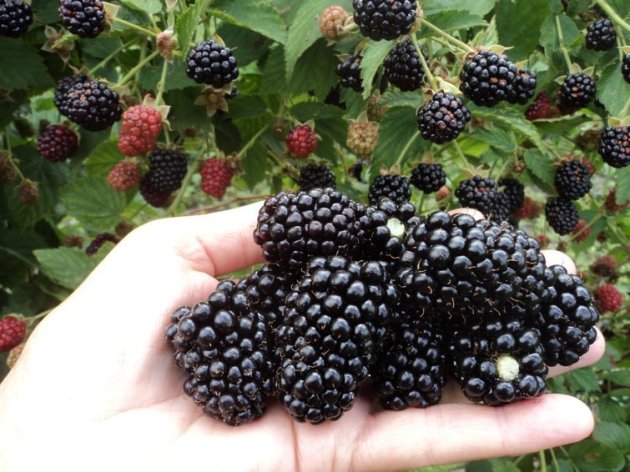
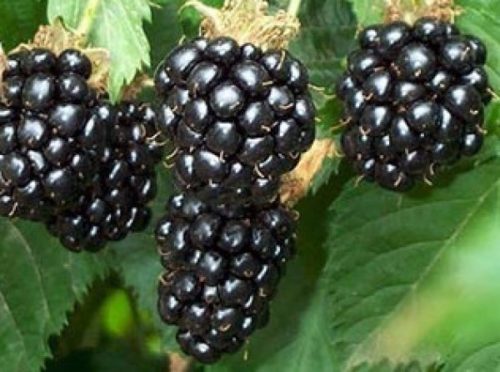
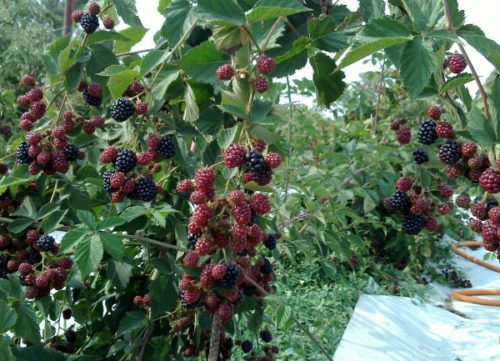
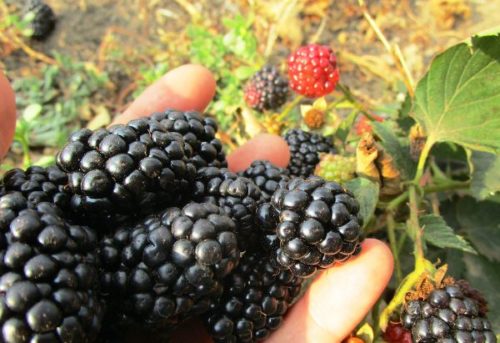
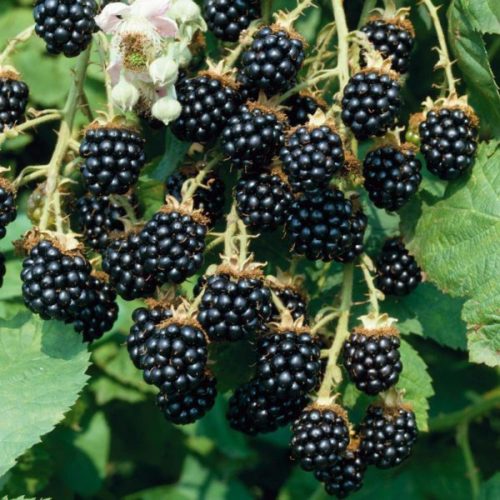
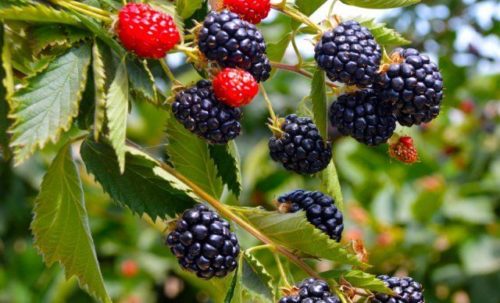
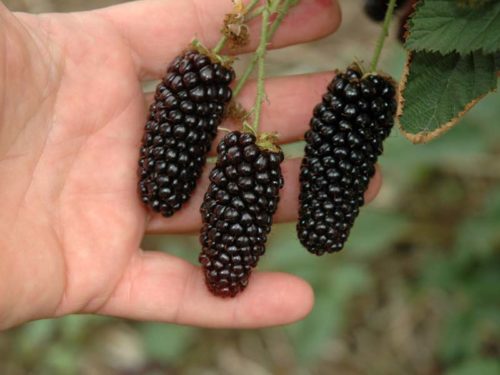
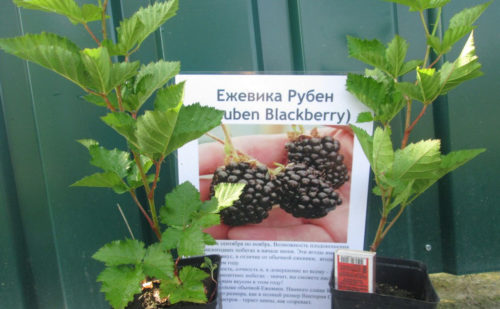
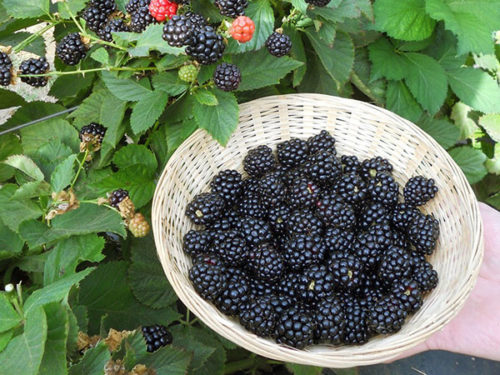
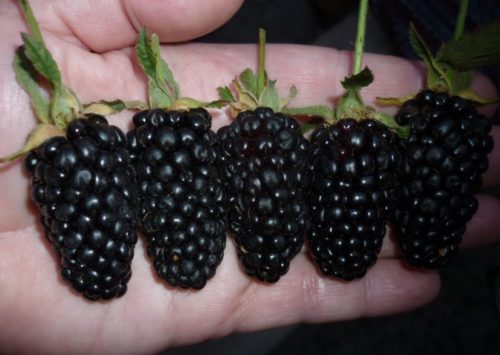
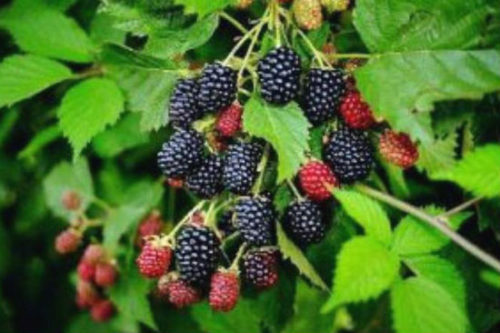
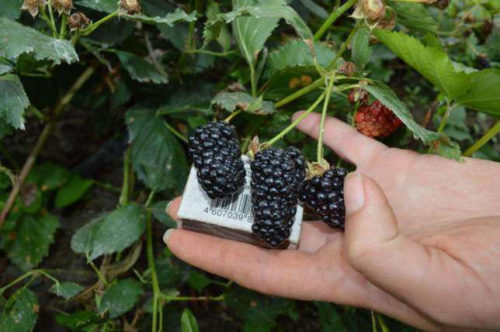
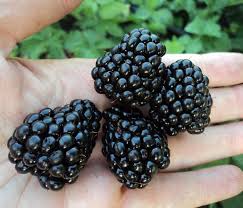
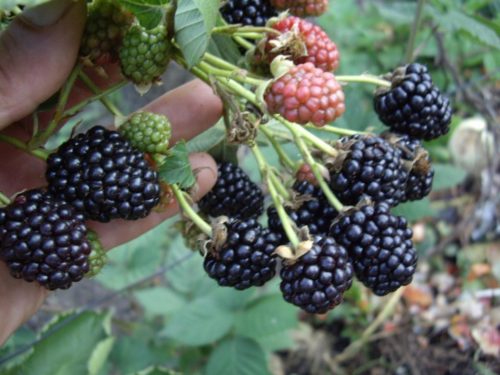
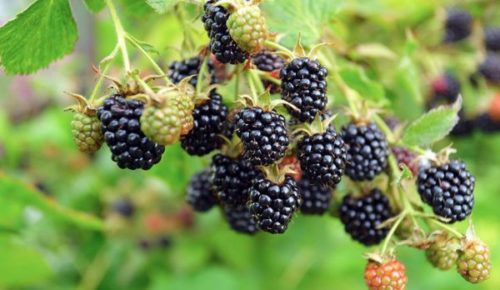
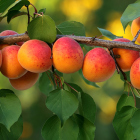
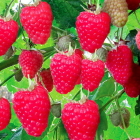
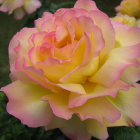
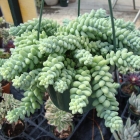
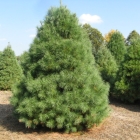
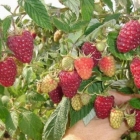
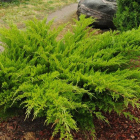
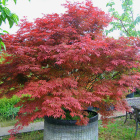
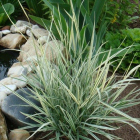
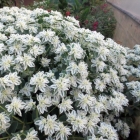
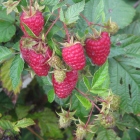
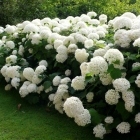
 Start a discussion ...
Start a discussion ...